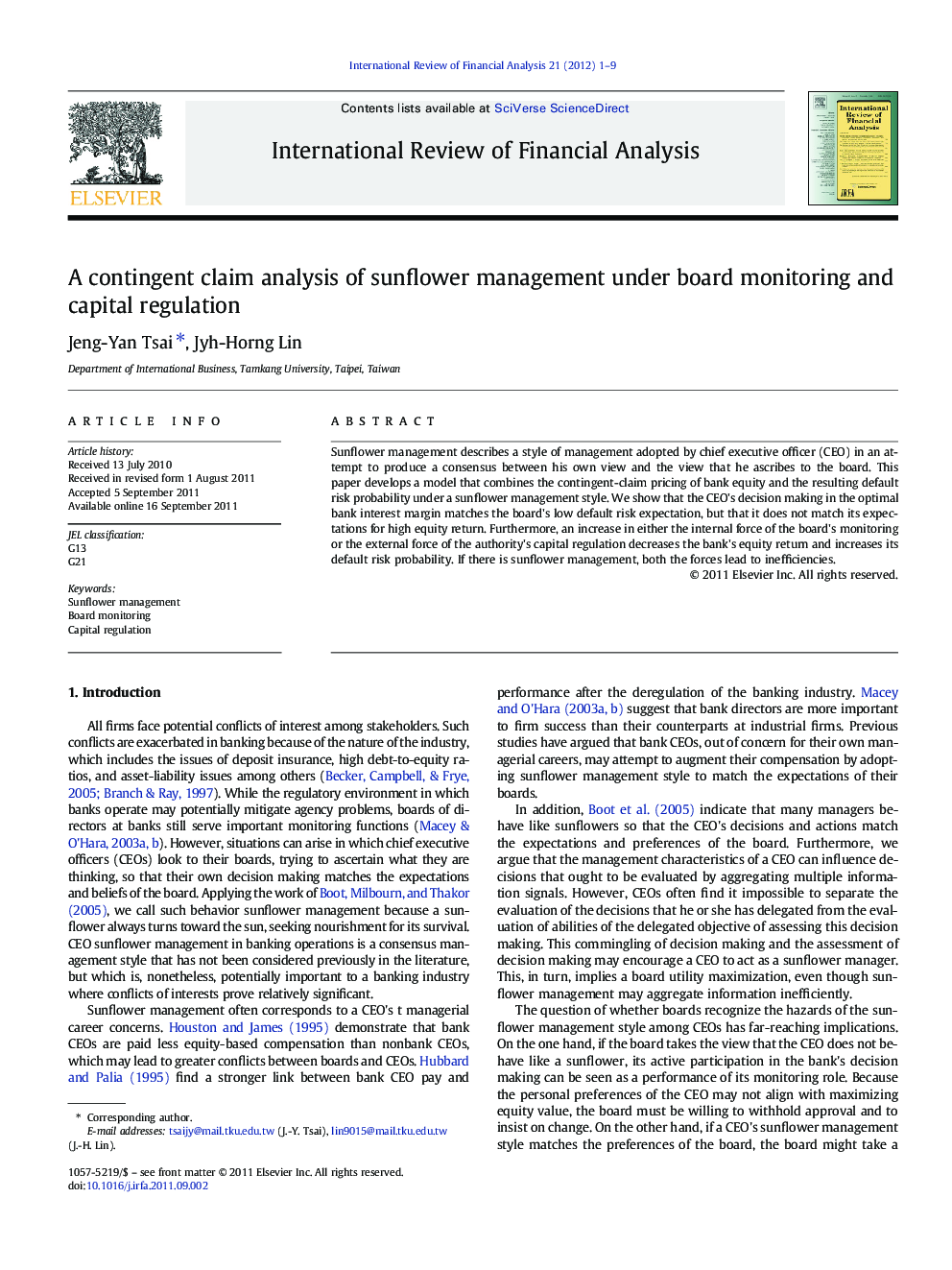| Article ID | Journal | Published Year | Pages | File Type |
|---|---|---|---|---|
| 5084973 | International Review of Financial Analysis | 2012 | 9 Pages |
Abstract
Sunflower management describes a style of management adopted by chief executive officer (CEO) in an attempt to produce a consensus between his own view and the view that he ascribes to the board. This paper develops a model that combines the contingent-claim pricing of bank equity and the resulting default risk probability under a sunflower management style. We show that the CEO's decision making in the optimal bank interest margin matches the board's low default risk expectation, but that it does not match its expectations for high equity return. Furthermore, an increase in either the internal force of the board's monitoring or the external force of the authority's capital regulation decreases the bank's equity return and increases its default risk probability. If there is sunflower management, both the forces lead to inefficiencies.
Related Topics
Social Sciences and Humanities
Economics, Econometrics and Finance
Economics and Econometrics
Authors
Jeng-Yan Tsai, Jyh-Horng Lin,
